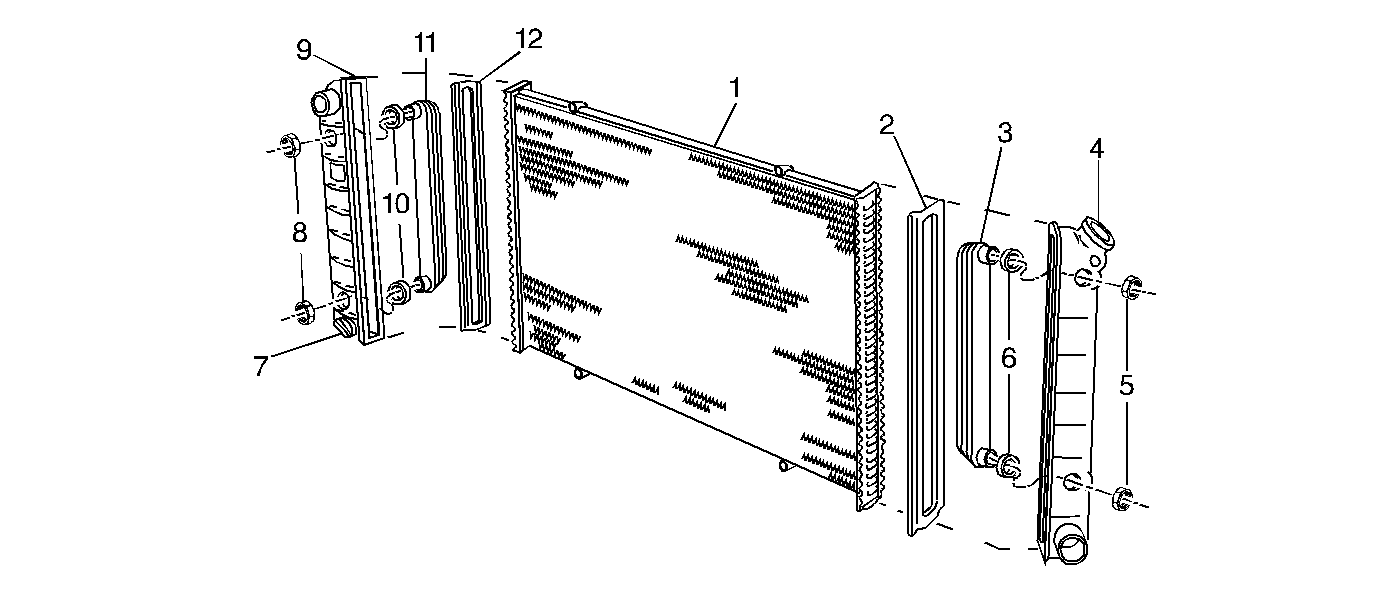
The radiator is a heat exchanger that removes heat from the coolant passing through it. The radiator holds a large volume of coolant in close contact with a large volume of air so that heat will transfer from the coolant to the air. The radiator core is divided into two separate compartments coolant passes through one, and air passes through the other. The aluminum radiator core (1) is a crossflow tube and fin design. A tube and fin radiator consists of a series of tubes extending from side to side on the radiator core. The tubes run from the inlet tank (4) to the outlet tank (9). Fins are placed around the outside of the tubes to improve heat transfer. Air passes between the fins. As the air passes by, it absorbs heat from the fins which have, in turn, absorbed heat from the coolant.
In a typical radiator, there are five fins per inch. Radiators used in vehicles that have factory installed air conditioning have seven fins per inch. This provides the additional cooling surface required to handle the additional heat load imposed by air conditioning.
The inlet (4) and outlet (9) tanks are molded with high temperature nylon-reinforced plastic. A high temperature rubber gasket (2, 12) seals the tank flange edge. The tanks are clamped to the core with clinch tabs. The tabs are part of the aluminum header at each end of the core (1). A plastic serviceable drain cock (7) and rubber seal is used.
The integral transmission oil cooler (3) is housed inside the outlet (4) tank. The cooler provides the automatic transmission fluid cooling capacity. This maintains a fairly constant temperature under all operating conditions.
